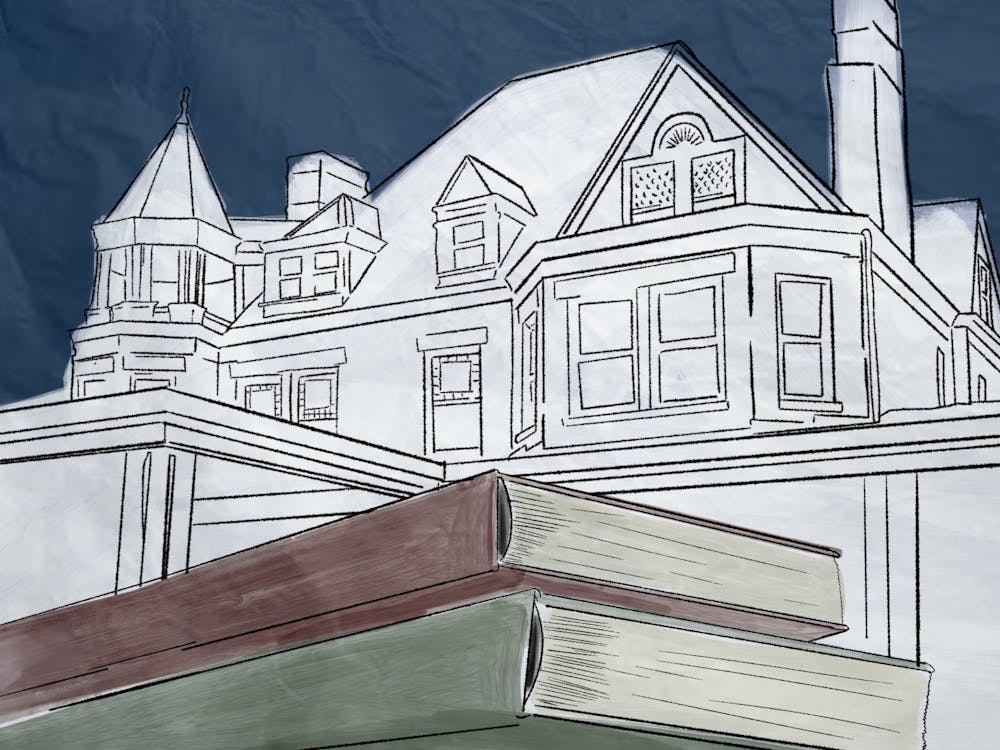Every student at the University has likely meandered past, or even made a point to visit 13 West Range — the former dorm room of Edgar Allan Poe. While enrolled at the University for only one term due to financial constraints, Poe’s time on Grounds may have served as inspiration for a number of his early stories and poems included in his first book, “Tamerlane.”
Graphic novelist Gareth Hinds’ new book “POE: Stories and Poems” — a collection of seven narratives each interpreted with unique visual style — celebrates Poe’s legacy as an author of mystery and macabre and enhances readers’ experience with the text. Arts and Entertainment had the opportunity to interview Gareth Hinds over e-mail to learn more about his inspiration and vision for the book.
Arts and Entertainment: What inspired you to produce graphic novels and comics in the first place?
Gareth Hinds: It was a natural evolution of my love of drawing and storytelling. In art school I tried my hand at many different types of illustration, but comics was the medium to which I found myself returning again and again.
AE: Most of your work is based on interpretations of classics — you’ve done “The Odyssey,” several Shakespeare adaptations, and “Beowulf,” to name a few. What drew you to Poe’s stories?
GH: I really enjoyed illustrating all the super dark and creepy imagery in Shakespeare's “Macbeth,” and my publisher encouraged me to maybe go even further in that direction. Poe seemed the obvious choice. Plus, of course, I just love Poe — who doesn’t?
AE: What kind of research did you do when working on the book?
GH: I researched the details of Poe's life, and that information mostly shows up in the author notes. I set each story in a different time period, so I gathered a lot of reference material for the historical costumes and architecture of different periods — for the most part, Poe doesn't specify exactly where or when his stories take place, so I chose settings that seemed to fit. One exception is "The Pit and the Pendulum," which is definitely set in Toledo, Spain, and features the Spanish Inquisition and General LaSalle (one of Napoleon's generals in the Peninsular War of 1808-1814). The story isn't historically accurate, as I explain in the author notes, but those are pretty specific references, so I researched the military uniforms of that war, and what Toledo looked like at the time.
Some other real places appear in the book, notably Poe's house in Baltimore, his actual gravesite at Westminster Hall Burying Ground, and Eastern State Penitentiary (for the framing elements of "The Tell-Tale Heart”).
AE: What kind of artistic techniques did you use to capture Poe’s stories?
GH: Each story in the book is illustrated in a slightly different combination of materials. I always enjoy experimenting with materials and techniques, and I am always trying to match or enhance the vibe of the story. These materials include ink, charcoal, watercolor, acrylic, color pencil and digital techniques (Photoshop).
AE: What kind of artistic inspiration did you find in Poe’s stories that served your graphic novel?
GH: Poe's descriptions are extremely vivid, and his imagery and psychological horror are as thrilling today as they were in the 19th century when he wrote these works. I found visual inspiration galore in Poe's words, and I think the book itself is the best answer to this question.
AE: Who do you think the audience should be for this book?
GH: In general, my books are used by middle and high school English teachers and librarians to introduce teens to these classic works. That is true for Poe too, but I feel like there are a huge number of adults who remember Poe with more than fondness — they are true Poe fans, and I hope they are reading this because this book is very much for them!
AE: What do you think the reader gains from engaging with Poe’s stories, or classic stories in general, through this format?
GH: The visual support helps anyone, but especially reluctant readers, dyslexics, non-native English speakers understand what's going on when the language gets too dense or archaic. This is more critical for something like Shakespeare than for Poe, but Poe's language can still be heavy going in places. The comics format represents time, action, narrative, etc. differently than prose does, so in a way it's like hearing a favorite piece of music transposed to different instruments or covered by a different artist. For some readers, the visual dimension makes it easier to appreciate the symbolism, themes and all that good stuff that normally tends to come on the second or third reading. At the same time, I hope it prompts them to read or re-read the original, and gives them a new appreciation for the accomplishments of these amazing authors.
Hinds will visit Charlottesville Oct. 20 to promote “POE: Stories and Poems.”





